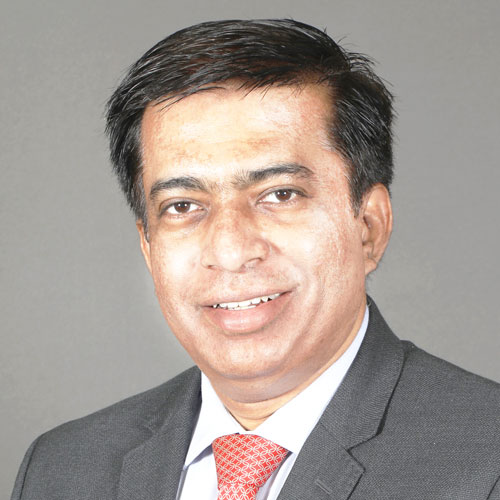Mr. Rahul Singh
Chief Investment Officer (CIO) – Equities, Tata Asset Management
With over 27 years of investment experience, Rahul Singh joined Tata Asset Management in October 2018 as CIO-Equities, leading the fund management and equity research teams.
In his previous role at Ampersand Capital Investment Advisors LLP, Rahul was the Managing Partner. He has also worked with many reputed financial institutions like Standard Chartered Securities and Citigroup Global Markets India as Head of Equity Research.
Rahul is a Bachelor of Technology in Mechanical Engineering from IIT Bombay and an alumnus of IIM Lucknow where he pursued his Master of Business Administration in Finance and Financial Management Services.
Q1. India's economic story looks promising with a projected GDP growth of 7.6%. How do you view India as an investment destination compared to other emerging markets?
Post immediate reaction of the equity markets to the Loksabha elections 2024 result, the medium to long term views on Indian equity market are expected to be robust. The Indian market is expected to have stable macros, strong earnings which would drive return. The market is expected to be more balanced, disciplined, strong and stock specific. This is expected to be supportive of bottom-up stock picking.
From a valuation front, valuation expansion is expected to normalize. Large cap is looking much better in terms of risk reward equation, compared to mid and small caps as large caps are lying at the lower end of 3rd quartile or 4th quartile in terms of performance.
Overall, India as an investment destination seems to be in a good shape.
Q2. Which sectors do you believe will attract or lose foreign institutional investors (FII) interest in the near term?
Considering the FII outflow as multi-year-high, in near term especially post election results, FII comeback is very unlikely unless market falls 5-7%. It's very difficult to expect them to come back in near term. The foreign flow is expected to be weak this year.
Q3. What is your outlook for Q1 FY25 earnings and sectoral performances across various sectors? Do you believe Q1 results will be better compared to what we saw in Q4 of FY24?
Indian markets are favorably placed on a global stage as India is one of the fastest growing large economy. The macro-economic factors remain strong and positive for the India-story with a capex cycle upturn. The earning growth continues.
Q1 FY25 result is expected to be better compared to what we saw in Q4 of FY24.
Sector performances :
Banking & financial - The Indian banking sector continues to remain in good health with an expectation of robust loan growth and healthy asset quality due to historically lower NPAs. This is expected to drive strong profitability growth trends in the coming years
Consumption- consumption is expected to get a boost led by enhanced government focus on welfare programs and rural spending. Consumer staple is likely to raise on rural support. There is likely to be more money made available, and taxations may get slightly tweaked to reduce the burden on common man.
Power, oil & gas- In a long-run, power or energy sufficiency will be the priority. Focus on renewable energy is likely to continue. In oil & gas sector, more exploration and drilling activities is expected to continue in order to meet higher demand and usage for natural gas & oil. Overall, We feel that there shouldn’t be any major change in stance plot.
Infrastructure - Valuations within the sectors seem overvalued and present a decent amount of risk. We continue to be incrementally cautious for the same. It is expected a slowdown in growth of government capex while private sector CapEx expected to pick up in order to compensate for the same.
Pharmaceutical – There is no major impact of election on pharma sector. The sector remains structurally positive.
Q4. Which are the top three themes on your radar for FY25 and why?
In the long run for FY25, Banking and Pharma sectors are expected to perform in the background of current valuations and expected growth trajectory. Due to coalition government, a little bit of focus is expected to come into rural economy, hence the consumer sector.
Q5. How frequently do you churn your portfolio and Why? What are the recent changes you have made in the portfolio?
The GARP (Growth at reasonable price) based valuation discipline which we have been maintaining across our funds, is expected to work now considering the current market scenario. Also across our funds, we had already started collecting our portfolio towards pharma and banking space. Banking and pharma is something which is coming out of our GARP philosophy. we will use this card to our advantage in a market like this because it's going to be a stock pickers market.
Q6. Do you think that in the current scenario it is the large caps that present a good tactical positioning versus the mid and the smallcaps?
Yes, Large cap is looking much more better in terms of risk reward and within large cap banking, pharma and consumer sectors are expected to do well. Midcap and small cap valuation is expected to go down while large cap valuation would go up, hence there will be a balance across market caps. More alpha can be expected in large cap space.







